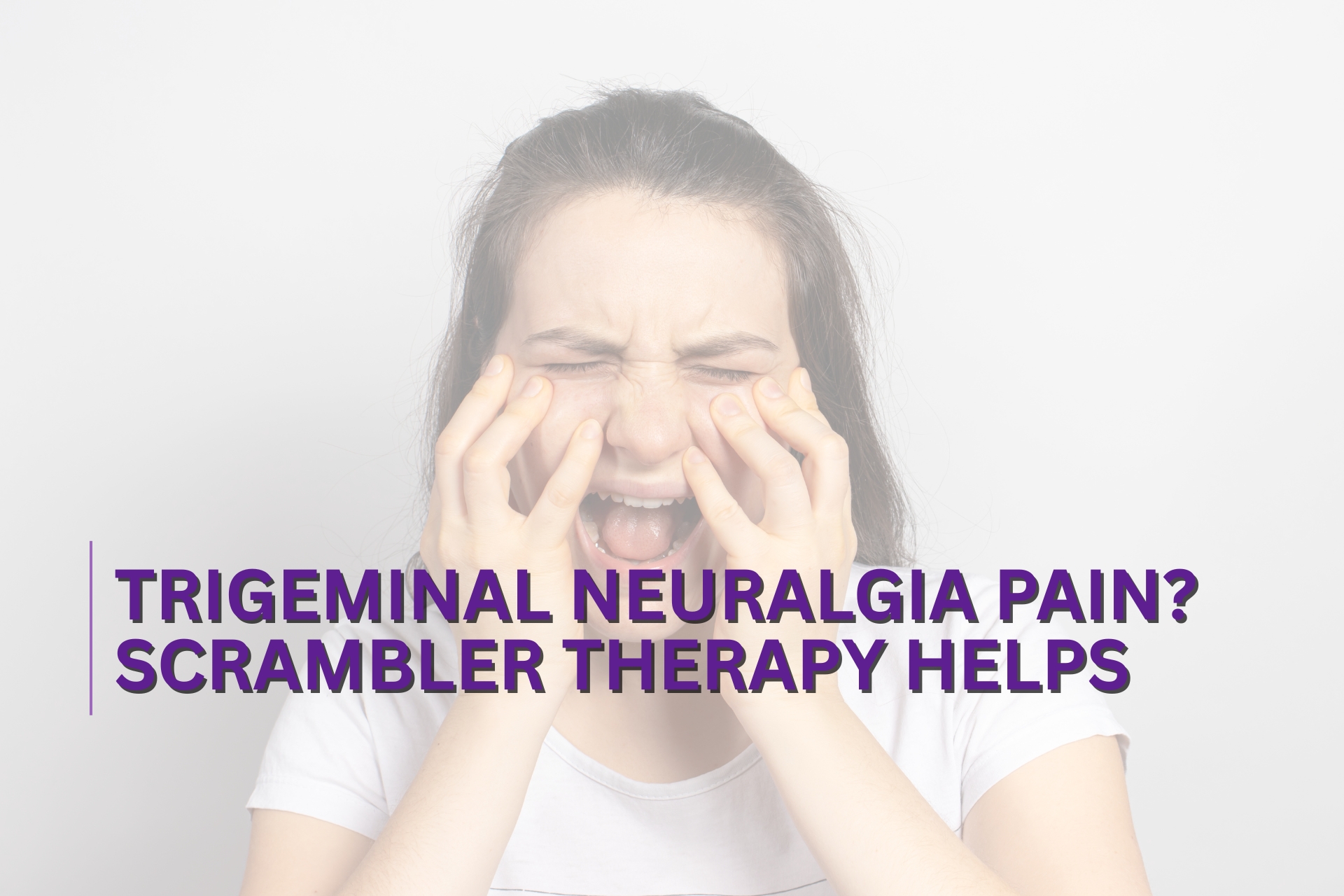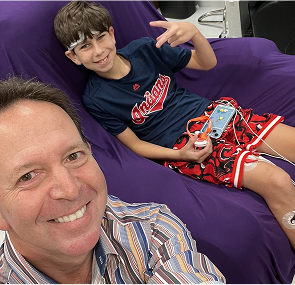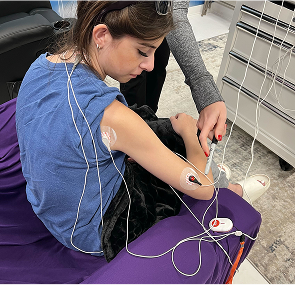Trigeminal Neuralgia Breakthroughs with Scrambler Therapy

The persistent pain condition known as trigeminal neuralgia (TN) affects the trigeminal nerve, which transmits sensory information from your face to your brain. TN causes sudden, electric-shock-like facial pain that can last from seconds to minutes, and it may strike multiple times per day.
There are two primary types:
- Type 1 TN (classic TN): Sudden, sharp, and episodic pain.
- Type 2 TN (atypical TN): Persistent, throbbing, searing pain that comes in less distinct bursts.
Who Can Develop Trigeminal Neuralgia?
- Age group: Most common in people over 50
- Gender: Women are slightly more affected
- Comorbidities: Higher risk in people with multiple sclerosis (MS)
Common Manifestations:
- Excruciating pain in the jaw, cheek, forehead, or eye
- Triggered by simple behaviors such as biting, brushing teeth, or touching the face
- Usually affects one side of the face
Next, we’ll look at what causes trigeminal neuralgia and how it begins.
What Causes Trigeminal Neuralgia to Develop?
Trigeminal nerve pain is often caused by compression of the nerve, particularly where the nerve exits the brainstem. This compression can cause nerve demyelination, making the nerve hyperactive and sensitive.
Common Causes and Triggers:
Risk Factors:
- Genetic predisposition
- Inflammatory disorders
- Neurovascular conflict
- Prior history of facial surgeries
Now that we’ve covered the root causes, we’ll explore how to recognize symptoms early.
What Are the Symptoms of Trigeminal Neuralgia?
Trigeminal neuralgia symptoms are typically intense and one-sided. Many patients describe the sensation as a lightning bolt of pain across the face.
Main Symptoms:
- Jaw pain or sharp discomfort near the lower jaw
- Cheek pain triggered by talking, smiling, or touching
- Forehead pain near the eyes or scalp
- Shock-like pain that may cause muscle spasms
- Pain flare-ups that occur in cycles
Affected Facial Nerve Branches:
Pain typically stays on one side and may switch sides in rare cases. Coming up next: how Scrambler Therapy addresses these pain signals.
How Does Scrambler Therapy Help Trigeminal Neuralgia?
Scrambler Therapy is a non-invasive, drug-free treatment designed to override chronic pain signals. The therapy uses the Calmare® device to send artificial nerve signals through electrodes placed near the pain zones.
How It Works:
- Sends non-pain information to the brain
- Uses electrical waveform therapy to mimic normal signals
- Rewires the brain’s response to chronic pain (neuromodulation)
- Promotes neuroplasticity and remapping of nerve circuits
Key Mechanisms:
Scrambler Therapy is especially beneficial for type 1 TN where shock-like episodes dominate. Next, let’s compare it with traditional treatments.
How Does Scrambler Therapy Compare to TN Surgery and Medications?
Traditional trigeminal neuralgia treatments rely heavily on anticonvulsants like carbamazepine, opioids, or invasive surgeries such as microvascular decompression.
Problems with Conventional TN Treatments:
- Medications: Side effects include drowsiness, cognitive decline, and tolerance build-up
- Surgery: High risk of nerve damage, infection, or loss of facial sensation
- Radiofrequency rhizotomy: May cause numbness or only short-term relief
Scrambler Therapy Advantages:
- Non-invasive with no surgical risk
- No long-term side effects
- No medication dependency
- Can be repeated safely
Now, let’s explore what real patients experience after Scrambler Therapy.
What Results Do Patients See from Scrambler Therapy?
Patient outcomes with Scrambler Therapy for TN have shown high success rates, with many reporting up to 80% pain reduction after a full treatment course.
Clinical Evidence:
- A 2021 study showed average pain reduction of 6.5 points on a 10-point scale
- Sustained relief observed during 3–6 month follow-ups
- Best results in chronic TN patients with previous treatment resistance
Real-Life Patient Benefits:
- Improved quality of life
- Ability to return to work or daily tasks
- Reduced need for medications
Many patients document their improvement using pain diaries and report a decrease in flare-up frequency. Next, we’ll cover who qualifies for this therapy.
Who Is Eligible for Scrambler Therapy for Trigeminal Neuralgia?
Not every TN patient is automatically a candidate. Pre-screening by a pain specialist or neurologist is essential to determine eligibility.
Ideal Candidates:
- Chronic type 1 or type 2 TN diagnosis
- Have refractory pain after trying other treatments
- Show signs of facial pain without ongoing inflammation
- Non-responders to anticonvulsants or surgery
Evaluation Process:
- Clinical indication via physical exam and history
- Diagnostic imaging to rule out tumors or compressions
- Consideration of co-morbidities and current medication use
If you meet these criteria, your next step is a treatment session. Let's break down what that experience looks like.
What Happens During Scrambler Therapy Sessions?
Each session is conducted in a clinical setting under a trained provider's supervision.
Treatment Timeline:
- Daily sessions for 10 to 12 days
- Each session lasts 45–60 minutes
- Electrodes placed near the pain zones, not directly on them
Sensations During Therapy:
- Gentle tingling or "buzzing" sensations
- No pain or electric shocks
- Patients remain awake and relaxed
Monitoring and Follow-up:
- Outcomes tracked using pain scales and diaries
- Maintenance sessions may be offered every few months
Next, where can you Get Scrambler Therapy for Trigeminal Neuralgia?
Where Can You Get Scrambler Therapy for Trigeminal Neuralgia?
You should only seek treatment from certified Scrambler Therapy providers experienced in treating TN.
How to Find a Trusted Clinic:
- Seek out clinics with Calmare device certification.
- Verify the provider is a neurologist or pain specialist
- Check patient reviews and treatment success rates
Top Treatment Centers:
- Calmare Therapy Centers of America (USA)
- Scrambler Therapy International Clinics (Europe & Asia)
- University-affiliated pain centers and teaching hospitals
With a trusted provider, you can complement the therapy with lifestyle strategies for better long-term outcomes.
How Can You Manage Trigeminal Neuralgia at Home?
Changes in lifestyle can lessen the frequency and intensity of flare-ups of TN.
Effective Daily Adjustments:
- Avoid cold wind or temperature extremes
- Use soft toothbrushes and avoid chewing gum
- Practice mindfulness or meditation
- Focus on nutrient-rich, anti-inflammatory foods
- Maintain regular sleep schedules
Complementary Strategies:
- Physical therapy to relax jaw muscles
- Manage TMJ pain if overlapping
- Avoid known trigger foods or facial stress
Let’s finish with answers to common questions about this therapy.
FAQs About Scrambler Therapy and Trigeminal Neuralgia
How long does Scrambler Therapy last?
Relief can last months to over a year. Maintenance sessions may be needed.
Is Scrambler Therapy safe for older adults?
Yes. It's safe, with no serious side effects reported in elderly TN patients.
Can Scrambler Therapy be repeated?
Yes. Re-treatment is safe and often effective for relapses.
Is there a home version of the Calmare device?
No. Scrambler Therapy requires a trained provider in a clinical setting.
Does it work for everyone?
Most patients see results, especially those with type 1 TN, but response varies.
Experiencing Chronic Pain in South Florida?

Discover South Florida Scrambler Therapy is one of the nation’s leading clinics for noninvasive chronic pain relief, offering FDA-cleared Scrambler Therapy® for adults and children. Co-founded by Dr. Rick Markson, one of the few practitioners worldwide to receive advanced certification directly from the therapy’s inventor in Rome, our clinic delivers globally recognized expertise with compassionate, personalized care. If you or a loved one is living with treatment-resistant nerve pain, we invite you to schedule a consultation and explore a life beyond pain.
Recommended Reads:
📘 What is scrambler therapy?
📘 What to Expect During a Scrambler Session
📘 CRPS Pain Relief Without Drugs—Real Patient Stories
📘 Conditions that scrambler therapy can treat
Take the Next Step: Free Consultation at South Florida Scrambler

Every day counts when we suffer from chronic pain. South Florida Scrambler Therapy offers a free initial consultation to determine if Scrambler is right for you. Schedule Today:
- Speak directly with Dr. Rick Markson’s team
- Learn about treatment protocols and insurance
- Complete a customized treatment plan
- Start seeing results within days, not months
📞 Call Now or Visit website: www.southfloridascramblertherapy.com
📍 We serve Palm Beach, Fort Lauderdale, and Miami from our location at 100 NW 100th Ave, Plantation
You Can Follow Us through Our Social Media:
📸Instagram—Day-in-the-life stories from our patients
👍Facebook—Success journeys and community support
You deserve to laugh, and enjoy life without pain. The journey starts here.
Start Your Pain-Free Journey Today






